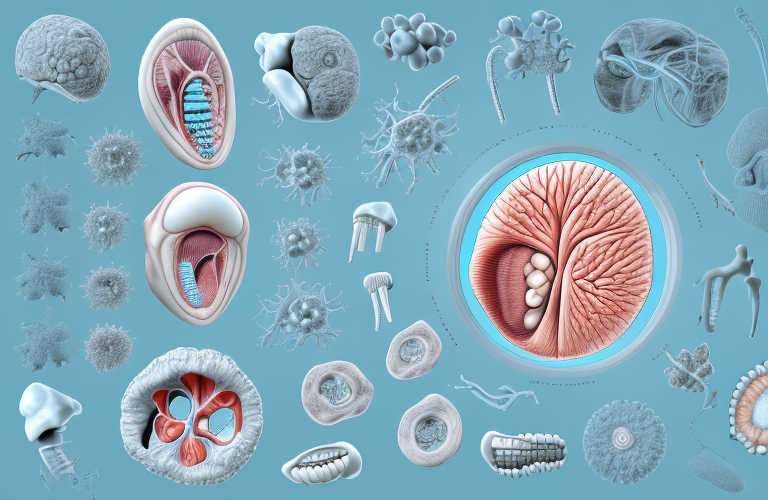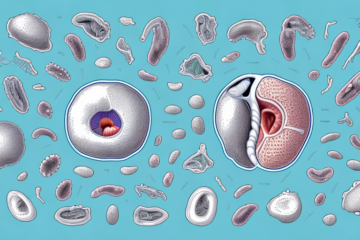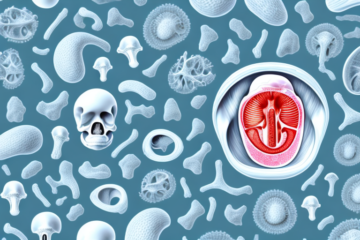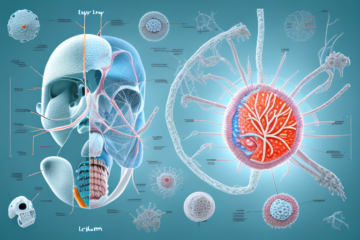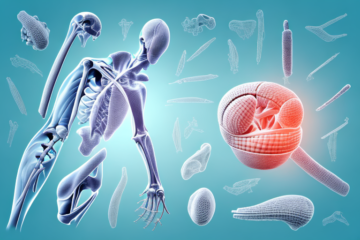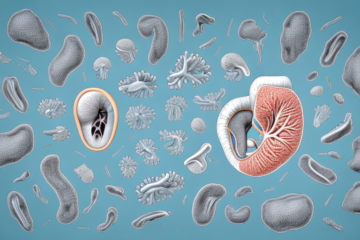The cervix is an important part of the female reproductive system. It acts as the entrance to the uterus and plays a crucial role in pregnancy and childbirth. In this article, we will explore the function and anatomy of the cervix, as well as the many issues associated with it. We will also discuss ways to maintain optimal cervical health, reduce the risk of cervical cancer, and clear up many misconceptions surrounding this essential part of the female body.
Understanding the anatomy of the cervix
Located at the base of the uterus, the cervix is a cylindrical, narrow passage that leads to the vagina. On the exterior of the cervix is a small opening known as the cervical os – this opening allows sperm to enter the uterus during intercourse. The inner lining of the cervix is made up of mucus-secreting glands that are essential for fertility and protecting the uterus from infections. The cervix also contains a ring of muscles that help keep the contents of the uterus in place during pregnancy and childbirth.
It is important to note that the cervix can also be affected by various medical conditions, such as cervical cancer, cervical dysplasia, and cervical incompetence. Regular cervical cancer screenings, such as Pap tests and HPV tests, can help detect any abnormalities early on and prevent the development of cervical cancer. Additionally, certain lifestyle factors, such as smoking and having multiple sexual partners, can increase the risk of developing cervical cancer and other cervical conditions.
The role of the cervix in female reproductive system
The cervix has several important roles in the female reproductive system. Its function is to allow sperm to travel up through the uterus and into the fallopian tubes, where fertilization can occur. The cervix also acts as a barrier, preventing bacteria and other harmful substances from entering the uterus. During childbirth, the cervix must dilate to allow for the baby’s passage through the birth canal.
Additionally, the cervix produces mucus that changes in consistency throughout the menstrual cycle. This mucus helps to create a hospitable environment for sperm during ovulation, by allowing them to move more easily through the cervix. The consistency of the mucus also helps to indicate where a woman is in her menstrual cycle, which can be useful for tracking fertility and planning pregnancy.
How the cervix changes throughout a woman’s life
The cervix undergoes several changes throughout a woman’s life – from puberty to menopause. During puberty, the cervix begins to produce mucus-secreting glands. During pregnancy, the cervix expands and becomes softer to allow for the baby’s passage through the birth canal. After menopause, the cervix becomes smaller and less active, and the production of cervical mucus decreases.
It is important for women to regularly monitor their cervical health through routine Pap smears and gynecological exams. Changes in the cervix, such as abnormal cell growth or inflammation, can indicate the presence of cervical cancer or other health issues. Early detection and treatment can greatly improve outcomes and overall health.
The link between cervical cancer and HPV
Human papillomavirus (HPV) is a common sexually transmitted infection that is linked to cervical cancer. HPV can cause abnormal cell growth that may develop into cancer over time. It’s important to note that not all cases of HPV lead to cervical cancer, and that regular Pap smear tests can detect abnormal cells before they develop into cancer.
There are several strains of HPV, and some are more likely to cause cervical cancer than others. The HPV vaccine can protect against the most high-risk strains of the virus, and is recommended for both males and females between the ages of 9 and 26. It’s also important to practice safe sex and use condoms to reduce the risk of contracting HPV and other sexually transmitted infections.
Steps to reduce the risk of cervical cancer
The risk of developing cervical cancer can be reduced through several lifestyle choices, including practicing safe sex, quitting smoking, and getting vaccinated against HPV. Regular Pap smear tests are also essential for detecting abnormal cell growth early on, before it can develop into cancer.
In addition to these lifestyle choices, maintaining a healthy diet and exercise routine can also help reduce the risk of cervical cancer. Eating a diet rich in fruits, vegetables, and whole grains can provide the body with essential nutrients and antioxidants that can help fight off cancer-causing cells. Regular exercise can also help boost the immune system and reduce inflammation, which can lower the risk of developing cancer.
It is important to note that while these steps can help reduce the risk of cervical cancer, they do not guarantee complete protection. It is still important to attend regular gynecological check-ups and discuss any concerns with a healthcare provider. Early detection and treatment are key in successfully managing cervical cancer.
Understanding cervical dysplasia and its treatment
Cervical dysplasia is a condition in which abnormal cells grow on the surface of the cervix. While it is not cancer, it can lead to cancer if left untreated. Treatment for cervical dysplasia typically involves removing the abnormal cells from the cervix through a procedure called a cervical biopsy.
It is important for women to receive regular Pap tests to screen for cervical dysplasia, as early detection and treatment can prevent the development of cervical cancer. In addition to cervical biopsy, other treatment options for cervical dysplasia may include cryotherapy, laser therapy, or loop electrosurgical excision procedure (LEEP). Your healthcare provider will determine the best course of treatment based on the severity of the dysplasia and other individual factors.
The importance of regular Pap smear tests
Pap smear tests are a crucial tool for early detection of cervical cancer and other issues related to the cervix. During a Pap smear, a healthcare provider will take a sample of cells from the cervix and examine them for abnormal growth or cell changes.
It is recommended that women between the ages of 21 and 65 get a Pap smear every three years, or as recommended by their healthcare provider. Regular Pap smears can help detect any abnormalities early on, which can lead to more effective treatment and a better chance of recovery.
It is important to note that Pap smears are not foolproof and may not detect all cases of cervical cancer. Women should also be aware of other symptoms, such as abnormal bleeding or discharge, and report any concerns to their healthcare provider.
Common symptoms associated with cervical issues
Symptoms of cervical issues can include abnormal vaginal bleeding, pain during intercourse, and unusual vaginal discharge. It’s important to see a healthcare provider if any of these symptoms occur, as they may be indicative of a more serious issue.
In addition to the aforementioned symptoms, other signs of cervical issues may include pelvic pain, discomfort during urination, and pain in the lower back. It’s important to note that some cervical issues, such as cervical cancer, may not present with any symptoms at all in the early stages. This is why regular cervical cancer screenings are recommended for women over the age of 21.
How to maintain optimal cervical health
Maintaining optimal cervical health involves several steps, including regular Pap smear tests, practicing safe sex, quitting smoking, and getting vaccinated against HPV. It’s also important to maintain overall good health through a balanced diet and regular exercise.
In addition to these steps, it’s important to be aware of any changes in your body and to seek medical attention if you experience any unusual symptoms, such as abnormal bleeding or pain during sex. It’s also recommended to limit your exposure to environmental toxins and to manage stress levels, as these factors can also impact cervical health. By taking a proactive approach to your health and seeking regular medical care, you can help prevent cervical cancer and other related health issues.
Different types of cervical procedures and their benefits
There are several types of cervical procedures, each with its benefits. These procedures may include colposcopy, where a healthcare provider examines the cervix and surrounding tissues using a special magnifying tool, and LEEP (loop electrosurgical excision procedure), where abnormal cells are removed from the cervix using a special electrified wire loop.
Another type of cervical procedure is a cone biopsy, which involves removing a cone-shaped piece of tissue from the cervix for further examination. This procedure is often used to diagnose or treat cervical cancer or precancerous cells. Additionally, cryotherapy is a procedure where abnormal cells on the cervix are frozen and destroyed using a special probe. This procedure is less invasive than other cervical procedures and can be done in a healthcare provider’s office.
What to expect during a gynecological exam and cervical check-up
A gynecological exam typically involves a physical exam of the external and internal female genitals, including the cervix. During a cervical check-up, a healthcare provider will typically perform a Pap smear test and may also examine the cervix for any abnormalities or signs of infection.
It is important to note that a gynecological exam and cervical check-up may cause some discomfort or mild pain. Patients may experience cramping or pressure during the exam, especially during the Pap smear test. However, the discomfort should be brief and tolerable.
Additionally, patients should feel comfortable discussing any concerns or questions they may have with their healthcare provider. It is important to establish open communication and trust with your provider to ensure the best possible care and outcomes.
Misconceptions and facts about the cervix
There are many misconceptions surrounding the cervix and its functions, including the belief that the cervix does not play a role in sexual pleasure. In reality, the cervix contains a high concentration of nerve endings and can be an extremely sensitive and pleasurable part of the female anatomy. It’s also important to understand that not all cases of HPV lead to cervical cancer and that regular Pap smear tests are an essential tool for early detection and prevention of the disease.
In conclusion, the cervix is a vital part of the female reproductive system, with many important functions and issues associated with it. By understanding its anatomy, knowing the risks and how to prevent them, and seeking medical attention when necessary, we can maintain optimal cervical health and fully appreciate the many roles the cervix plays in our lives.
Another important fact about the cervix is that it changes throughout a woman’s menstrual cycle. During ovulation, the cervix becomes softer, higher, and more open to allow sperm to enter the uterus. After ovulation, the cervix becomes firmer, lower, and more closed to prevent bacteria from entering the uterus. Understanding these changes can help women track their fertility and plan for pregnancy or contraception.

